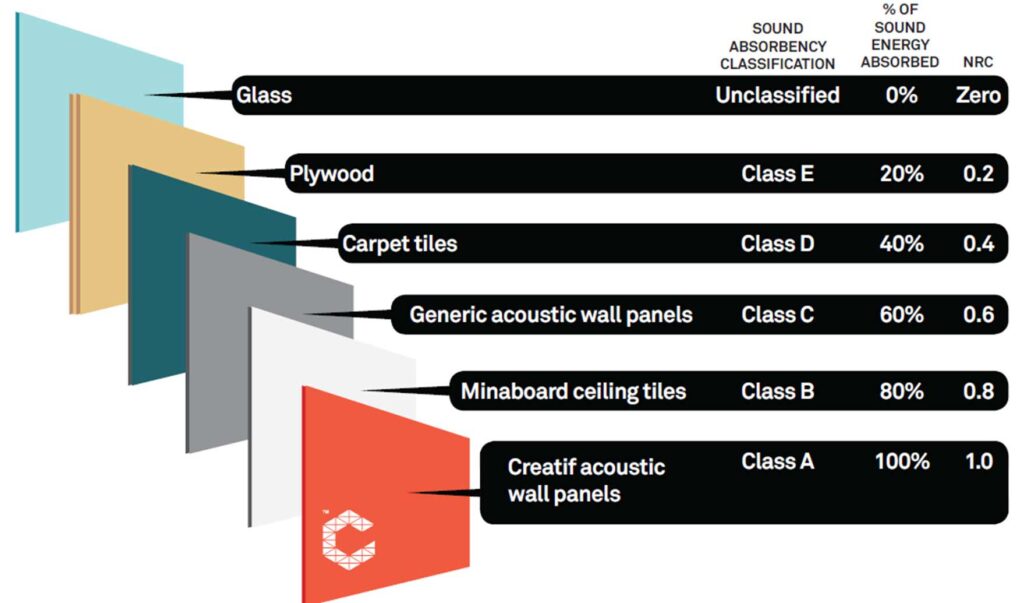Acoustic Standards - The Basics
There are many regulations and standards covering acoustics in non-residential buildings. Below we briefly introduce the most commonly referred to documents.
REVERBERATION TIMES IN OFFICE AREAS, OR OTHER ADJACENT CIRCULATION SPACES, SHOULD NOT EXCEED…

BS 8233:1999 Sound insulation and Noise Reduction for Buildings is a code of practice which addresses the external and internal acoustic design for a variety of building types. Although it is intended for use by non-specialist designers and constructors of buildings, it is actually a relatively complex document and not entirely suited to the needs of the workplace designer. It does however set a useful benchmark in stating that “reverberation times in office areas, or other adjacent circulation spaces, should not exceed 0.4 seconds for fully fitted small rooms of 50m3 or 0.7 seconds for fully fitted rooms of 500m3.
Building Bulletin 93, generally known as BB93, sets out standards for acoustic design in schools. Its requirements are mandatory for primary and secondary schools. While it does not specifically apply to working environments, it contains much relevant advice and is a useful reference source. In particular it suggests maximum reverberation times for various spaces.
BS EN ISO 11654:1997 Sound Absorbers for Use in Buildings is an international standard which specifies a method by which frequency-dependent values can be converted into a single number – the Noise Reduction Coefficient (NRC). This gives us a useful reference tool for the comparison of the sound ABSORBENCY of materials as shown below.

The NRC is not the same as Sound Transmission Class (STC). This index is concerned with how well materials STOP sound energy across a frequency band from 125-4000Hz. A low STC rating – say, 25, indicates poor sound insulation properties, a high STC rating of, say, 60, indicates
excellent sound insulation properties. STC ratings – like dB ratings – are logarithmic but are not calculated in the same way and should not be confused. This system is widely used in North America, less so in the UK.